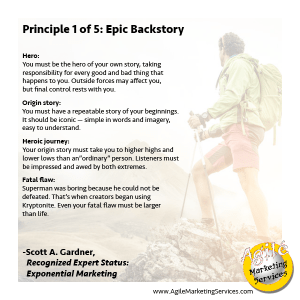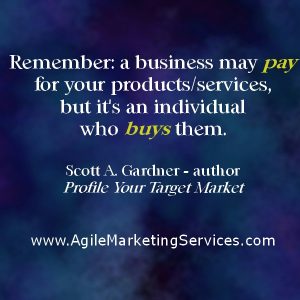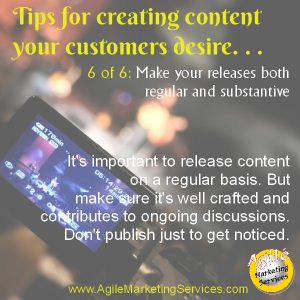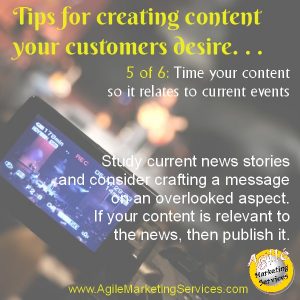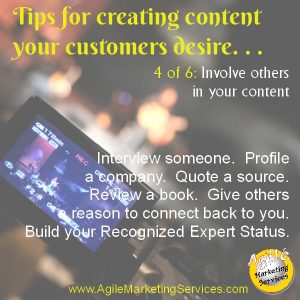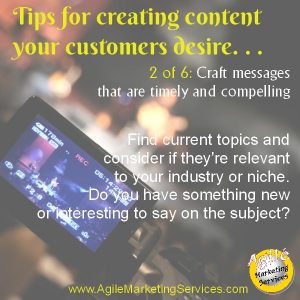Writing
Won’t Turn Pink In The Can

Once upon a time
There’s an apocryphal story about a tuna cannery at the turn of the 20th century. Canned salmon was the dominant fish sold over most of the US. An exec with the tuna cannery compared all the features of his tuna with the features of canned salmon. One of the biggest differences was the color. Tuna was white, and salmon was pink.
Rather than try to convince prospects why they should buy tuna instead of salmon, he simply added a large headline to all his ads for tuna: “Will Not Turn Pink In The Can.”
Tell the truth
The beauty of this phrase was that the ad exec was making a factual statement. He left the reasoning as to why it was factual to prospective consumers. Salmon was pink when the can was opened – did that mean there was something wrong with the fish? The can? The whole process of getting salmon to consumers?
While the actuality of this story has been debunked a number of times, the truth of it remains. So much so that in the past couple of decades, real marketing executives have used used phrases like “A non-fat food” on packaged loaded with sugar and carbs, or “No added sugar” or “No added salt” on foods naturally loaded with with those ingredients.
These are easy examples – ones well within reach that I can pluck down and show you. However, not every example has to have the negative potential that these phrases have.
Be assertive
I’m bringing this up because I have a prospective client who’s looking for a way to differentiate her products from her competitors. You don’t have to craft sentences starting with “We’re different because. . .” or “We’re better because. . .”
Find something positive to say about your product or service – something that sets it apart from your competition – and trumpet it loudly and proudly. Pick something irrefutable, something that cannot be proven false. Use this as your positioning statement, and make sure it’s truth sets you apart from the competition. After that, it’s up to you to tell prospects why that position is better than, or superior to, the competition.
Experimenting On Myself
Write – But Don’t Sell – Your Nonfiction Book

Fiction and nonfiction book sales are like horses and zebras. They look kind of alike, and their related in their DNA, but they ain’t nothin’ alike.
I don’t bother trying to sell my nonfiction. It should be an enticement to something bigger. Let’s say you self-publish a nonfic ebook and make $15 every time you sell a copy. You sell 1,000 and you’ll get $15k. BTW, unless you’re a name, you’re not going to sell 1,000 copies at a price that will net you $15 each.
Why You Need Lots Of Landing Pages
 Whenever you’re promoting something, and you want the person to go online to a web page, you need a custom landing page. Whether it’s an actual advertisement, or a link from someone else’s site, or even a media release you put out, each one of those should have it’s own, distinct landing page.
Whenever you’re promoting something, and you want the person to go online to a web page, you need a custom landing page. Whether it’s an actual advertisement, or a link from someone else’s site, or even a media release you put out, each one of those should have it’s own, distinct landing page.
A landing page is where you send folks who respond to a notice you’ve put out into the world. You want to engage these folks in a specific manner, and get them to perform a definite action, like join an email list or purchase a product.
So yes, you may technically have a three page website, but behind the scenes you may have over a dozen different landing pages, depending on where your incoming links are, the specific markets you’re targeting, the reasons they may have in responding to your call to action, and the conversations already going on in their heads.
Let’s say you sell dog collars. There are tons of reasons people might look for a dog collar. Maybe they want their small dog to be safe, maybe they want their large dog to have a stylish collar. Maybe they’re looking for a harness for their support animal. One person wants a collar that’s leather-free, while another one only wants natural materials. What you want is a specific page for each of these folks, one that addresses their concerns and ONLY their concerns.
As I’ve mentioned in previous ‘casts, there are two ways to address your prospects. You either offer to remove a pain point, or to provide a pleasure point. Those are two very different things. For each of the “dog collar” examples above, you could either remove a pain point, or provide a pleasure point. Let’s say you have 6 different solutions to a given problem or situation. You can present each of those solutions in two different ways. Suddenly you need twelve different landing pages.
I have a nonprofit client, looking for donations. That’s the very basic info. They’re a cat rescue operation (point #1), willing to take small donations (point #2), or large donations (point #3). This fall, we’re going to try to find people willing to make a large donation to their nonprofit.
I have to appeal to these prospects by either providing a pleasure point, or removing a pain point. What I need to do is create A & B versions of a landing page for each of the points mentioned. So at the very least, I need six different pages: one set that addresses people who have an interest in rescue cats (point #1), one that addresses people who want to make a small donation to help care for rescue cats (point #2), and one for people able to make a large donation – for my purposes, that’s any amount of $5,000 and above. That’s point #3.
Let’s say I’m creating pay per click search engine ads to capture the eyeballs of people able to make a large donation, which is exactly what we’re planning for this fall. First, there are two groups of people – those who love cats, and those who don’t necessarily. Second, we have the reasons they want to make a donation. Some people are in it for the recognition. Some people are in it for the effect their money will have. Others are simply looking for a tax writeoff. Who makes large donations? Obviously, individuals. But also, corporations and foundations.
So I need to create an ad for each of those specific interests, and then I need to create a different landing page for each of those ads. The focus of one landing page might be, “We’ll publish your name in our newsletter, on our website, and send your name and photo out in media releases.” The focus of another landing page might be, “Your donation is tax deductible and will reduce your tax burden for the current fiscal year.” I could address the concerns of people who love cats in two different ways: “Your contribution will keep the cats under our care healthy until we can find a family to adopt them,” or “Your contribution will help remove unwanted cats from the streets.”
It sounds like a pain in the rear, I know. But that’s what marketing is: you’re looking to have the right conversation with a specific person. If creating the right links, and sending individuals to specific landing pages accomplishes your goal (like building your email list or making a sale), then it’s worth it.
Once you start building these landing pages, you need a good statistics program on your website to sort out how many visits you’re getting to each of these pages. You should be able to tell where these visits are coming from because you should never send visitors to a specific page from more than one source. If you run the same ads on both Google and Bing, make a different copy of that landing page for each source. You might name one “Large dog collar safety Google” and the other one “Large dog collar safety Bing.”
Also, you don’t want to list any of these landing pages on your navigation system for the site. You don’t want people stumbling on them from a general search. If someone finds one of your specific landing pages from a link on a news page, and then forwards that link to a friend, that’s fine. Essentially they’re both coming from the same place.
What it boils down to is: you need a LOT of different landing pages.
Today’s action items:
- Start writing the marketing copy for two different versions of a landing page. One of these pages should supply a pleasure point for your customers, and one should remove a pain point.
- Build the two different landing pages, or have your webmaster build them.
- Create copy that offers the pleasure point, and that offers the pain relief. Put this copy in ads, media releases or other marketing materials that you disseminate. The link in the “pleasure” release should point to the “pleasure” landing page, while the link in the “pain” release should point to the “pain” landing page. And of course, action item
- Start recording and measuring the results.

